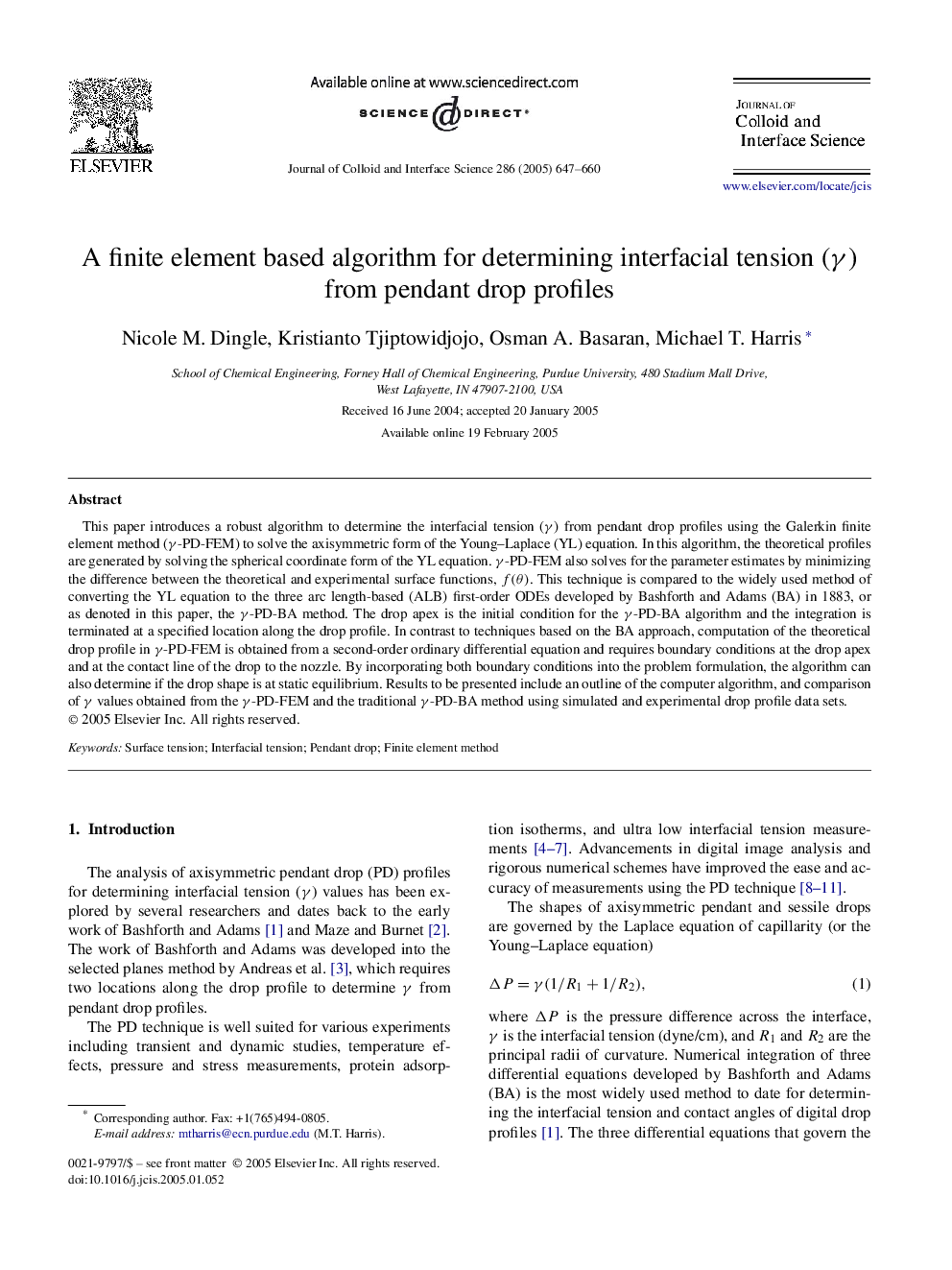| Article ID | Journal | Published Year | Pages | File Type |
|---|---|---|---|---|
| 10377982 | Journal of Colloid and Interface Science | 2005 | 14 Pages |
Abstract
This paper introduces a robust algorithm to determine the interfacial tension (γ) from pendant drop profiles using the Galerkin finite element method (γ-PD-FEM) to solve the axisymmetric form of the Young-Laplace (YL) equation. In this algorithm, the theoretical profiles are generated by solving the spherical coordinate form of the YL equation. γ-PD-FEM also solves for the parameter estimates by minimizing the difference between the theoretical and experimental surface functions, f(θ). This technique is compared to the widely used method of converting the YL equation to the three arc length-based (ALB) first-order ODEs developed by Bashforth and Adams (BA) in 1883, or as denoted in this paper, the γ-PD-BA method. The drop apex is the initial condition for the γ-PD-BA algorithm and the integration is terminated at a specified location along the drop profile. In contrast to techniques based on the BA approach, computation of the theoretical drop profile in γ-PD-FEM is obtained from a second-order ordinary differential equation and requires boundary conditions at the drop apex and at the contact line of the drop to the nozzle. By incorporating both boundary conditions into the problem formulation, the algorithm can also determine if the drop shape is at static equilibrium. Results to be presented include an outline of the computer algorithm, and comparison of γ values obtained from the γ-PD-FEM and the traditional γ-PD-BA method using simulated and experimental drop profile data sets.
Related Topics
Physical Sciences and Engineering
Chemical Engineering
Colloid and Surface Chemistry
Authors
Nicole M. Dingle, Kristianto Tjiptowidjojo, Osman A. Basaran, Michael T. Harris,
